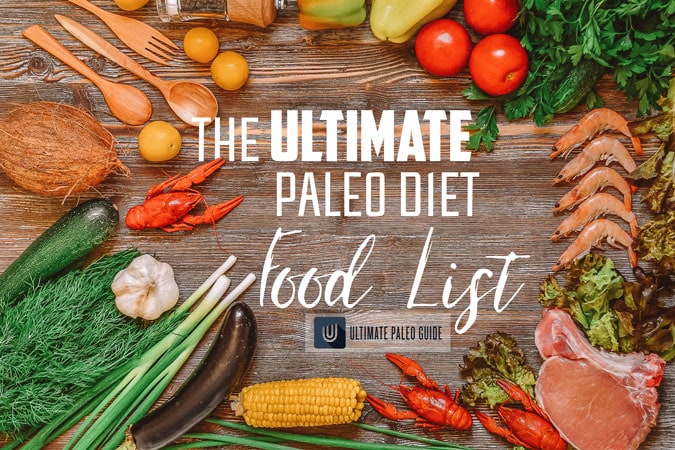
Healthy living starts from an early age. Children learn about the importance of eating well and physical activity, and as they grow they become more aware of the benefits of eating healthily. Although it can seem difficult to maintain a healthy diet, there are many studies that show that balanced eating includes all important food groups. This includes whole grains and protein as well as plenty of fruits, vegetables, and whole grains. Maintaining a healthy weight is key to a healthy lifestyle.
The Healthy Lifestyles program was designed by individuals with disabilities. This holistic approach has evolved as people discover how to live healthier, happier lives. The workshop includes a Health Life Curriculum and a Leader's Guide that can help teach participants how to live a healthy lifestyle. Six follow-up meetings are included in the workshop. These meetings allow participants to discuss their progress towards their personal goals and share strategies, resources, and successes. They also learn how to maintain healthy eating habits and lifestyles.

The program includes three components: advocacy, education, clinical care. The first phase requires teachers to attend a Lead Healthy Lifestyles Leader certification training workshop. The workshop simulation is included in the training. The workshop is a chance for trainees to get first-hand knowledge of the curriculum. Leaders take part in a 1-day Leadership Training event to further their knowledge on the Healthy Lifestyles curriculum.
The three-year programme is divided into phases and focuses on the message of a healthy lifestyle. It promotes healthy lifestyle choices and active living. The piloting phase is designed to build relationships with children and increase awareness about the program. In the final phase, children begin to apply the principles of Healthy Lifestyles in their daily lives. There are also many facets to a successful healthy lifestyle, so make sure you start by making a plan.
The second phase of the programme is the Creating a Supportive Context. This phase aims at raising awareness about HeLP, and establishing relationships between parents and students. Professional dancers and athletes speak to children at the school about healthy lifestyles, and they also run workshops. They are great role models and have the potential to change school culture. A healthy life starts with a healthy diet and physical activity. Your health can be improved if you live a healthy life.

Lifestyle changes are important to a healthy lifestyle. Regular exercise and a healthy diet are key components to a healthy lifestyle. Include healthy foods in your diet. Foods rich in vitamins or minerals can be eaten. Healthy food will make your body work better. Additionally, it is possible to eat less fatty food.
FAQ
Do I have to exercise every single day?
No! Get at least 30 minutes of moderate-intensity physical activity 5 days a week. It means you need to exercise hard enough or walk fast enough that you are slightly out-of- breath.
How many calories should you consume each day?
The exact amount varies depending on the person. The average is 2000 - 2500 calories per day. It's important to assess your life style, gender, age and height in order to determine how much calories you need.
Can I drink alcohol while exercising?
Yes. Alcohol has increased energy expenditure, speed up recovery time, and reduced soreness.
Additionally, alcohol can increase insulin sensitivity and make it easier to absorb glucose.
Alcohol can cause dehydration. This can slow down your metabolism. It also reduces testosterone production, which may decrease muscle-building potential.
Women shouldn't consume alcohol before exercising. Women who drink heavily should wait at the least 24 hours before exercising.
It is important that women who are nursing avoid alcohol.
Men should limit their intake to one drink per day.
What is the best workout order?
It all depends upon what you are trying to achieve. To build muscle mass, you should first lift heavy weights. Then move into cardio. For those who want to lose weight or exercise, you can switch from cardio to strength-training.
You can burn fat by just doing cardio. Then add strength training after.
If you are looking for muscle mass, cardio should be your last option. Cardio stimulates growth hormones and helps build muscle mass.
Before you start your workout, it is a good idea to eat. You will be able to give your muscles more fuel so they can work harder. You will feel happier during your workout.
What are the best foods to avoid when trying weight loss?
Avoid foods that contain trans fats. Trans fats increase LDL (the harmful) cholesterol and lower HDL (the good).
Trans fats can also be found in deep-fried food, fast food, packaged bakery goods, snack cakes, as well as other processed foods.
These unhealthy fats also cause inflammation, leading to heart disease and diabetes.
Foods containing artificial sweeteners should also be avoided. Artificial sweeteners increase the risk of getting cancer.
These chemicals are found everywhere, from soft drinks to chewing candy to candy bars to chewing gum. They appear in many other foods, including meat, poultry, fish, and eggs.
Artificial sweeteners are saccharin (cyclamate), sorbitol and aspartame.
The American Heart Association suggests that you avoid these chemicals as they can cause DNA damage in your cells.
Why is Metabolic Wellness the Key to Aging Well
Today's people live longer than ever before. However, people are getting sicker as they live longer. Our current medical science approach is not working, even though we've made many advances.
We need to change how we think about health and aging. Healthy aging is possible only if we look at our metabolic health, not just weight loss, but also overall well-being.
And if you want to live an active life for decades to come, you should ensure that your metabolism stays strong and healthy throughout your entire lifetime.
The good news is that there are many ways to improve your metabolic health. One way is to include these 7 foods in your diet.
-
Resveratrol is a component of blueberries that has been proven to improve cellular longevity. They are also rich in vitamins C & E and antioxidants.
-
Beans like lentils and pinto beans are excellent fiber and plant-based protein sources. These nutrients help keep blood sugar levels steady so they won't spike and crash.
-
Broccoli's sulforaphane has been shown to protect DNA from damage in research. It might even slow down the progression of cancer.
-
Chia Seeds are high-in omega-3 fatty acids, fiber, and other nutrients. They are also rich in antioxidants, protein, and fiber. These nutrients promote gut health, brain function and heart health.
-
Green Tea contains polyphenols called caechins. Studies show that catechins in green Tea can reduce the risk of developing diabetes, stroke, cognitive decline, and bone fractures.
-
Salmonis high in protein and rich in vitamin D is one of the most popular sources of lean proteins.
-
Walnuts contain omega-3s and antioxidants like alpha lipoic acid (ALA). ALA is an antioxidant that protects against inflammation. It also boosts energy production.
Statistics
- Are You One of the 20% of Guys (mh.co.za)
- Candidates and applicants must pass all four tests at 70% (minimum level) to graduate from Basic Deputy U.S. Marshal (BDUSM) Training. (usmarshals.gov)
- Get free shipping and 25% off today. (healthline.com)
- An estimated calorie range for moderately active adult males falls between 2,200 to 2,800 calories per day, depending on age. (eatright.org)
- According to the American Academy of Dermatology (AAD), men over 50 are at a heightened risk of developing it. (healthline.com)
External Links
How To
What nutrients is a man supposed to consume daily?
Men need healthy growth and development. The body needs vitamins, minerals as well as proteins, carbohydrates and fats.
Also, the male body requires certain nutrients at specific times during the day. When you're sleeping, your body uses energy from food for hormones, proteins, and enzymes. When you awake, protein is used by your body to build muscles or repair damaged tissue.
At night, your body breaks down fat and stores the extra energy as glycogen. Your body requires fewer calories, but still needs enough nutrients. If you feel hungry, you may consider having a snack during the evening.
To fuel your muscles while you train, you will need sufficient carbs as well as protein. If you exercise hard, you might feel muscle soreness.
To prevent this, you should eat carbs as well as protein within the first two hours after training. Your body will breakdown stored glycogen and provide you with glucose for energy.
Also, protein must be consumed immediately after your workouts. This prevents muscle tissue loss that happens while you sleep.
Your body makes lactic acid when you are doing intense physical activities. Lactic acid builds up in the bloodstream and causes fatigue. This can be avoided by eating foods high in carbohydrates like fruits and vegetables.
Carbohydrates give your body the energy it needs to recover from strenuous exercise.
Your diet may include lean meats like fish, eggs, milk cheese, yogurt or beans as well as lean proteins such as fish, eggs, egg yolks, cheese, yogurt, bean, peanuts and seeds.
These foods all contain high-quality proteins. Protein is important for muscle growth and repair. It provides amino acids that your body needs in order to produce sexhormones and testosterone.
You also need enough dietary fats to maintain good skin, hair, nails, and joints. Healthy men need to consume between 20%-35% of their total calories from fat.
Fat helps protect your heart health and prevents cancer. It helps keep your brain working properly.
Most of the fat you need can be obtained from vegetable oils, including sunflower oil (or soybean oil), peanut oil, peanut oil, soybean oil, and peanut oil.
These oils are high-in monounsaturated, unsaturated fatty acid (MUFAs). MUFAs help lower cholesterol and reduce inflammation. They protect cells against damage from free radicals.
Saturated Fats (SFAs), which are mostly found in animal products like meat, butter, and dairy products, include LDL ("bad") cholesterol. SFAs increase LDL ("bad") cholesterol, and increase triglycerides. They promote weight gain as well as belly fat.
Polyunsaturated fats (PUFAs) are found in plant-based sources like vegetable oils, nuts, seeds, and grains. PUFAs reduce inflammation and improve cardiovascular function. They also reduce blood sugar, cholesterol, and other inflammatory factors.
Low HDL ("good") cholesterol is a common cause of erectile dysfunction in men. Saturated fats are a major source of bad cholesterol. This lowers good cholesterol.
Red meat and pork are a common source of prostate problems in men who eat a lot. Nitrites convert to nitrosamines when cooked at high temperatures. These compounds can cause cancer.
Many processed meats are high in nitrites, and other dangerous chemicals. They should be avoided.
The American Heart Association recommends eating no more than 2 servings of red meat per week. Instead, choose poultry or fish, beans, tofu and whole grain bread.